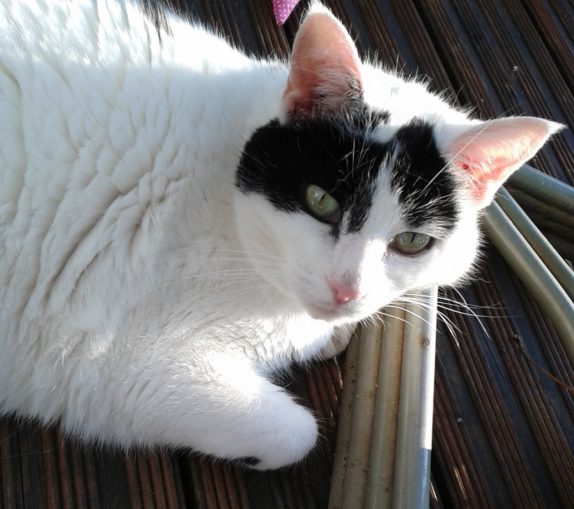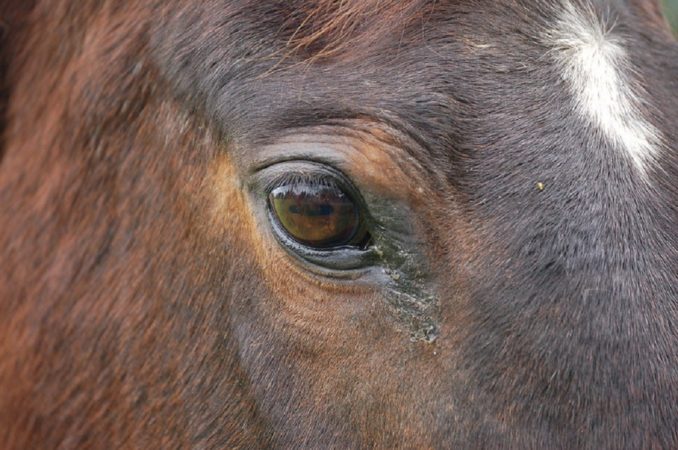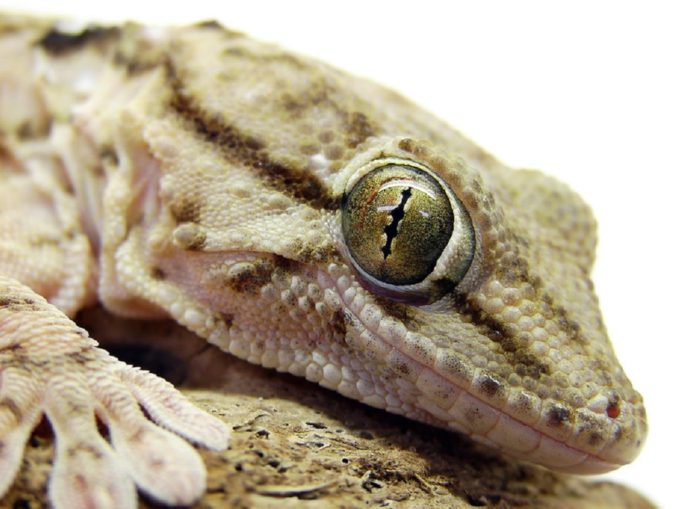Last week I was slobbing in front of the TV watching Married at First Sight Australia. Guilty pleasure but it’s escapism from the full-on pressures of the day job. The couples had to go back to the “husband’s” family home so we were taken to Queensland to the family farm – and a close up of a goat staring straight down the camera. Of course, we know that goats (and sheep come to that) have horizontal pupils. What’s more, it’s not exactly as secret that cats have vertical slit pupils. But how, and why?

by David Goehring / CC BY 2.0

by © HamsterWheel 2014
Bit of basic science first. That little black dot in the centre of your eye is the pupil, and it’s been called that since the 12th Century when Italian translator Gerard of Cremona (c. 1114 – 1187) coined the term. We all know what it’s there for – the expanding dot allows light rays to travel into our eyes and hit the retina so that those light rays get translated by the rods and cones into visual images.
In the human eye, the coloured iris contains two groups of smooth muscles. Firstly, a circular group called the sphincter pupillae constricts the pupil in bright light, making the hole smaller and letting in less light. The second set of muscles – the dilator pupillae – extend radially like the spokes on a wheel. When they tighten, they allow more light through the enlarged pupil onto the rods and cones. So that combination of a ring of muscle and radial muscles creates that circular hole. Other pupil shapes have additional muscles to enable constriction and dilation: slit pupils have muscles that compress the length of the opening.

by Henry Vandyke Carter / Public Domain
So that’s the how. What about the why?
Although this small black pupil has the same purpose throughout the animal kingdom, it’s no always round in shape but varies between species. Our goats and cats are just the start of the journey.
We know the pupil – as it expands and contracts – lets different amounts of light into the eye. In the dark, it will expand to allow in more light. In the bright, it can constrict. But that’s not all. The shape of the pupil also impacts on depth perception. Digging around, I came across the work of Martin Banks and colleagues published in Science Advances 07 Aug 2015. The shape and orientation of the pupil can be directly linked to when the animal is active, when it hunts and its habitat.
Terrestrial animals will be surrounded by horizontal contours – a hedgerow along a field or the edge of the riverbank. As they gaze along the ground, their vertically elongated pupils allow the brain to estimate distances of these horizontal contours and provide depth perception. This allows our ambush predators to be able to assess distances accurately and very precisely – allowing for the all-important pounce and kill.
So, ambush animals with eyes at the front will tend to have vertical slit pupils. However, one cat is not the same as the next cat. The lion, being taller that your best moggie, has a circular pupil. Part of the reason is because it is a daytime hunter rather than nocturnal mog, however as well as that, the lion has got longer legs meaning its eyes are higher off the ground giving it a longer fixation distance. This means that they don’t need the features of the vertical slit which are so important to the moggie.
Banks’ was able to show that the height of the predators in their database is linked to pupil-shape by showing that, of those animals with vertical pupils, 82% had shoulder heights less than 42 cm. Think cats, foxes, snakes and crocodiles.
Other predators – such as wolves – hunt during the day and win their prey by chasing them until the animal is exhausted rather than pouncing like the ambush predators! Again, they don’t need the complex vertical slit and a round pupil is more than sufficient to deal with day-time light levels.
But let’s go back to the goat at the start of this article. Being herbivorous they don’t need the sharpness of focus to pounce on and kill that blade of grass however they are sitting ducks in the food chain. (Although ducks have a field of vision of 340 degrees and sleep with one eye open so they’re probably in a better place that the old goat!) The herbivore needs to be able to detect a predator approaching from any angle, whilst being about to see if its exit route ahead is clear. The horizontal pupils provide best image quality in front of and behind the sheep (or goat or horse) whilst also making sure that the pupil doesn’t let in too much light which would damage the retina.

by Marie Kuiper / Public Domain
The circular and slit pupils are the basics. There are many more complex examples of pupils in other animals. Take for example the gecko. When it’s dilated, the pupil takes the shape of the familiar large circle. When constricted, the pupil looks like a chain of three or four vertically aligned pin holes. This evolution is essential for the gecko because – unlike the diurnal or nocturnal animal – the polyphasic gecko has multiple sleep and wake phases in each 24-hour period. Its eyes must be able to work efficiently as it hunts both in light and dark. In fact, the change in the amount of light the pupil allows in can be controlled 300-fold between fully dilated and fully constricted whilst the string of pinhole pupils allow the gecko to estimate depth before pouncing on lunch. With that design you’d have thought the eyes would have a couple of helpful eye lids and lachrymal glands to keep them moist. No – some species have fixed eyelids and so they have to lick these eyelids with their tongues to keep them clean and stop them from drying out. (By the way, the gecko can stick to any surface except dry Teflon.)

by GarrettTT / CC BY-SA 2.0

“Smiley Face”
by Matt Reinbold / CC BY-SA 2.0
And finally, a quick look at the cuttlefish with its modified horizontal slit. Like the gecko, the cuttlefish’s pupil fluctuates between circular and slit – this time making a “W” shaped horizontal aperture when it constricts in brighter light. This constriction helps the cuttlefish to even out the scattered light of a reef which might be hiding its prey, eliminating any direct light and improving light-contrast in the dimmer parts of its habitat. The “W” effectively operates as a vertical slit allowing the cuttlefish to see what’s in front and behind at the same time. Just to complicate matters a little more, some research also suggests that the “W” helps the cuttlefish to distinguish between colours.
So, in summary, the eye has evolved to take into account many different elements: whether the animal is prey or predator, whether the animal is diurnal, nocturnal or polyphasic, whether it will ambush or chase dinner and how far the eyes are from the ground.
Personally, I rather like the gecko’s vertical pin hole design but I don’t think my tongue’s long enough to lick them.
© Hamster Wheel 2020
The Goodnight Vienna Audio file
Audio Player



